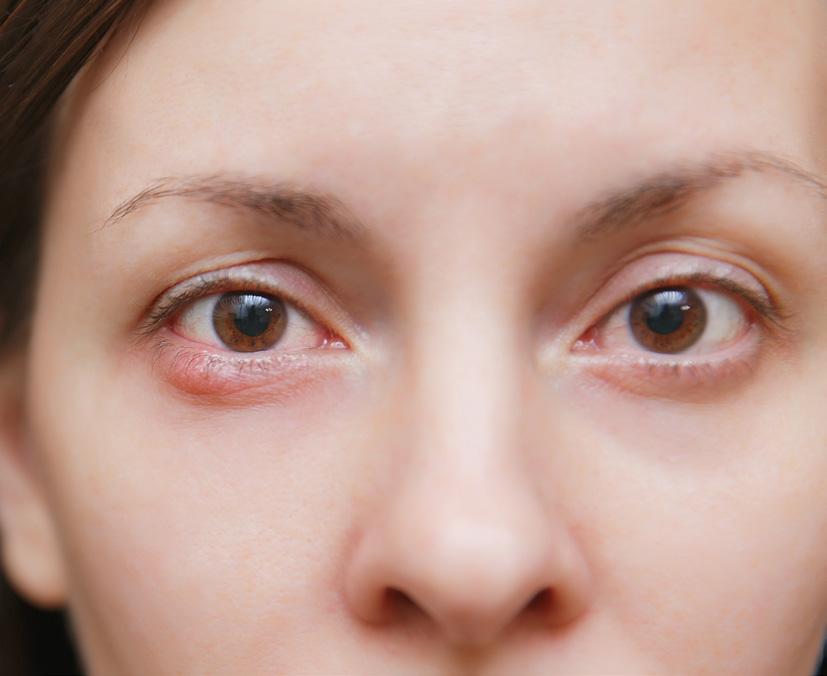
3 minute read
Caring for a Hordeolum Lesion (Eyelid Stye
MICHAEL COLE, OD Child and Family Eye Care Center
Imagine you wake up on the morning of an important day — only to look at yourself in the mirror and see a giant, unsightly red bump on your eyelid. What are those things? How can we get rid of them?
Advertisement
Understanding the anatomy of the eyelid is important to understand how these lesions form, and what we can do to prevent them. Inside our eyelids are numerous oil-producing glands. The largest and most important of these glands are called meibomian glands. These oil glands are located along the length of both the eyelids, from left to right. These glands open and empty their contents onto the ocular surface just inside the eyelashes. If you look very closely along the eyelid edge, you can see tiny oil droplets along these pores which are spread across the eye when we blink. This creates a sort of “oil slick” across the surface of our tear film which is important to keep the eye healthy and vision clear.
When one of these glands becomes blocked, the contents of the gland are not able to escape and become backed up inside the gland itself. As the amount of trapped material increases, the body mounts an inflammatory response, causing a red, painful bump on the eyelid termed a hordeolum. These inflammatory lesions often cause the tissues around them to be inflamed, also resulting in a swollen, unsightly eyelid. If the blockage occurs near the gland opening along the lashes, sometimes a visible white head appears on the lesion, which is commonly called a stye. Frequently, these lesions occur deep within the eyelid which appear without the white head and only as a painful red lump.
For these lesions to fully heal, the blockage must be relieved, so the gland’s contents are able to empty. The best way to facilitate this is with heat. Warm compresses of any kind will usually do the trick. Heat applied directly to the eyelid followed by gentle massage toward the gland opening along the lash line is the best course of action. This will warm up the stagnant oils and other contents of the lesion and loosen them up so they may be expressed from that gland. In many cases, there will be some discharge as the contents drain, which is both normal and desirable. In almost all circumstances, eye drops, (whether OTC or by prescription), are ineffective, and are not indicated for treatment of this condition.
Normally these will eventually drain with or without intervention. Unfortunately, it usually takes many days or even weeks to fully heal. Sometimes, if the contents are unable to drain, the body will encase the inflammatory material which results in a hard lump in the eyelid called a chalazion. These firm masses are no longer painful or red after the body has sealed them away to avoid further inflammation. When this transition to a non-active lesion occurs, it is much more difficult to drain and heal. These often persist for months or even years without surgical intervention. The best course of action to prevent this unpleasant scenario is to practice good eyelid hygiene. One should avoid rubbing or touching the eyes with unwashed hands. It is helpful to clean along the eyelashes with a wash rag while showering, while avoiding harsh soaps near the eye. Makeup should be removed completely every day, and makeup should be replaced often, (looking at you, two-year-old eyeliner). Another source of inflammation that could contribute to this process is the overwear and poor replacement schedule of contact lenses. Sometimes, even with the best prevention efforts, these lesions can still occur at any age. Thankfully, while a hordeolum is painful and frustrating, it's rarely serious.
If you or a family member has questions or concerns, or to schedule an appointment, please call our office at 435-363-2980.










